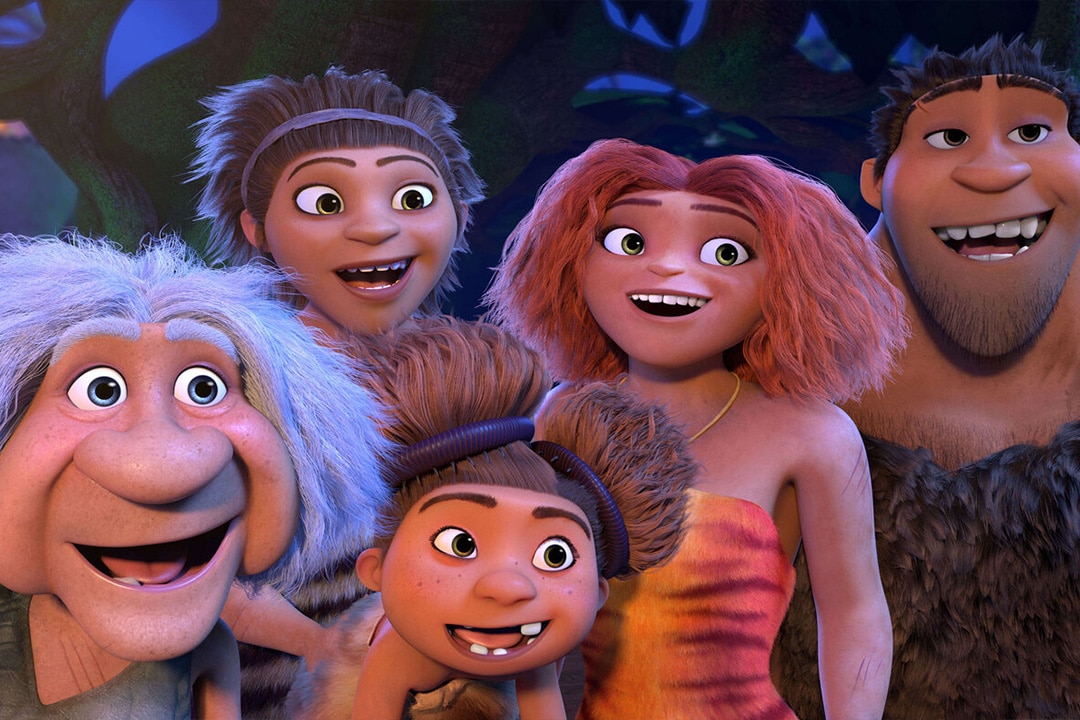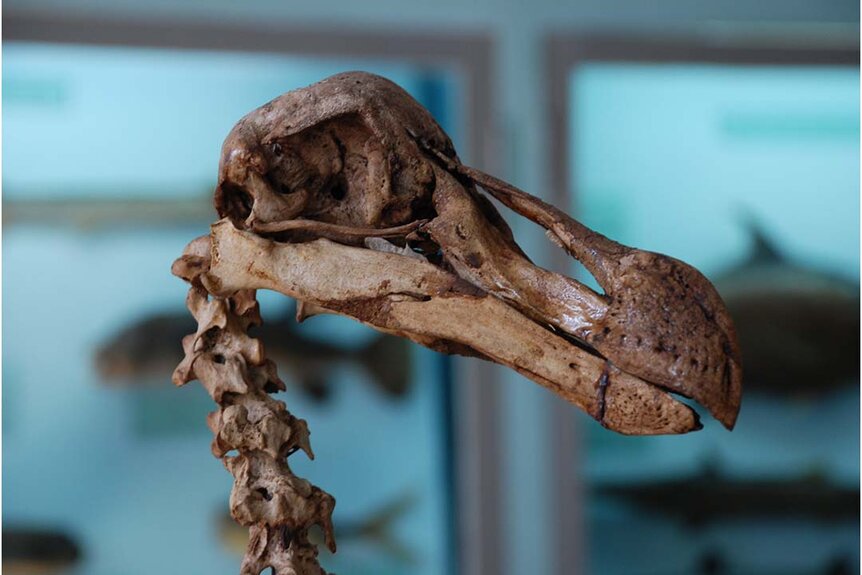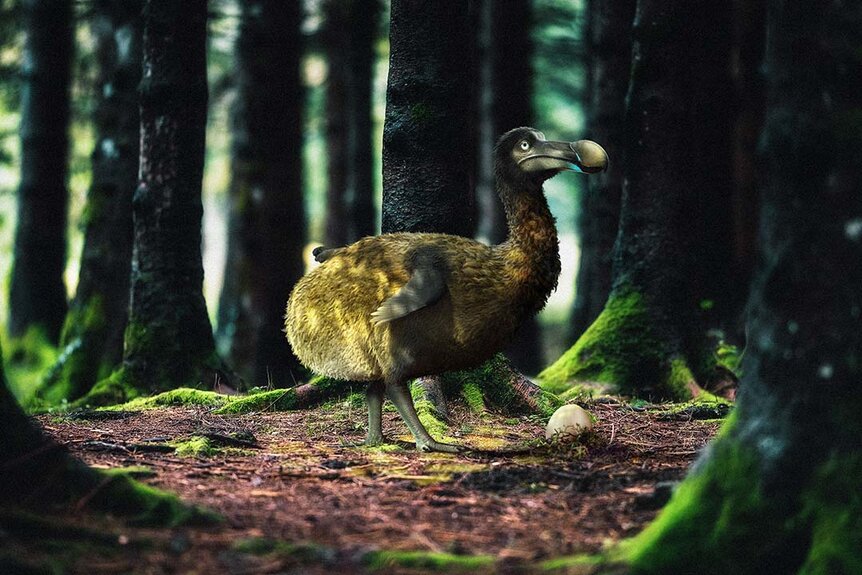Create a free profile to get unlimited access to exclusive videos, sweepstakes, and more!
'De-extinction company' Colossal Biosciences commits to resurrecting the dodo
The dodo's four-century nap might be coming to an end.

The 2013 animated family film The Croods introduced the world to the titular prehistoric family as they tried to survive in a pre-civilized world. Their story continued in the feature length sequel The Croods: A New Age as well as two television series Dawn of the Croods and The Croods: Family Tree (now streaming on Peacock). Along the way, they encountered all manner of extinct creatures, both real and imagined, some of which served as threats while others as companions.
For now, stories like The Croods are the only way we can envision what it might have been like to live alongside species which no longer walk the Earth, but all of that might be primed to change. At least, if the folks at Colossal Biosciences have their way. The company was founded in 2021 by George Church and Ben Lamm, and bills itself as the world’s first de-extinction company. John Hammond, eat your heart out.
Colossal has made headlines a couple of times in recent years as they’ve announced the launch of high profile de-extinction projects. Their first at-bat was with the wooly mammoth, a project which remains ongoing with a dedicated team of scientists. Then, last year, the company announced a partnership with Andrew Pask and the Thylacine Integrated Genetic Restoration Research Lab (TIGRR for short) to restore the Tasmanian tiger to the Earth.
RELATED: Now we have an instruction manual for resurrecting the extinct Tasmanian Tiger
“We are not a mammoth company. We want to be the world’s first de-extinction company. That’s a combination of de-extinction and species preservation. For us, it’s about looking at some of these iconic species we believe we can bring back to the Earth and taking lessons learned from that and applying them to conservation, which is kind of the ethos behind the company,” Lamm told SYFY WIRE.
Now, according to a recent announcement, the company has received $150 million in Series B funding from United States Innovative Technology Fund (USIT) and other collaborators. As a part of this new round of funding, the company has also announced the launch of its Avian Genomics Group, led by Dr. Beth Shapiro, Colossal Scientific Advisory Board member and lead paleogeneticist, with the goal of resurrecting the dodo.
The mammoth and thylacine projects, despite both being mammals, present their own unique sets of problems. Lamm explained that with the mammoth we have fairly good genetic data and the distance between the mammoth and the Asian elephant isn’t terribly large. But the gestation period is nearly two years, which is a long process for scientists to duplicate. Conversely, the distance between the Tasmanian tiger and the dunnart – its most closely related living species – is a little further. However, because they are marsupials the gestation period is much shorter, only a couple of weeks. It’s a reminder that figuring out the path to artificially creating one of these animals isn’t necessarily a roadmap for any others. That said, the information we learn along the way could potentially be applied more broadly to help non-extinct but endangered species around the world.
Avian genomics is interesting for similar reasons. The reproductive process in mammals and birds is dramatically different and the tools we have for cloning mammals don’t translate directly to birds. Resurrecting the dodo therefore presents an opportunity to push into an understudied area of genetics.
“We try to look for projects where we can explore new areas that can benefit the entire de-extinction toolkit we’re working on,” Lamm said.
RELATED: Back from the dead? Cloned ferret offers hope for endangered species
Avian cloning is certainly one of those areas. At present, we don’t have a workable process for cloning birds, full stop. We figured out how to clone mammals decades ago and have done it countless times in the intervening years, but it relies on having access to egg cells at a specific moment and then replacing its nuclear contents with your target genetic data. By the time we can get our hands on bird cells, they’re beyond that point and the moment is gone. If we want to clone birds – living or extinct – we’ll have to develop new technologies.
“The one we’re leaning toward at the moment capitalizes on what are called primordial germ cells. In chickens when the egg is laid and it’s about a 24-hour-old embryo these PGCs are migrating around the outside of the embryo to get to the gonads where they will eventually become sperm or egg, depending on the biological sex of the embryo,” Dr. Shapiro told SYFY WIRE.
At that moment, when the PGCs are migrating around the embryo, scientists can swoop in and snatch them up with a needle, and place them in a dish. If we can get them to divide and grow we can edit them there before placing the modified PGCs back into an egg at the same stage of development. Those PGCs will then become the sperm or eggs that bird carries in their body.
“That bird, when it hatches out of that egg, will be normal itself. But its eggs or its sperm will be modified and that is how we will attempt to get these edits into the next generation. We’re not editing the bird, but we are editing something,” Shapiro said.
In point of fact, there’s some precedent for this process according to Dr. Shapiro. She tells a story about previous research, during which a chicken was modified with the PGCs from a duck. When that chicken hatched, some of its germ cells were chicken and some of them were duck. Scientists then fertilized that chicken with sperm cells from a duck which, of course, only worked on the duck eggs. And that chicken hatched duckling children which simply hitched a ride into the world inside the body of a chicken. That’s essentially what scientists are hoping to do with the dodo.
It’s unclear precisely when we’ll see the first dodos, but Lamm thinks it might be sooner than you’d expect. The company has a goal of birthing the first hybrid mammoths by 2028, but with a 22-month gestation period they need to get to embryos pretty quickly. Given the shorter and easier gestation period of the dodo, which is only about a month long, Lamm thinks we might see a dodo first. Of course, there are still plenty of unknowns in avian genomics, so he’s resistant to give a firm timeline.
It’s also worth noting that the first animals – whether dodo, mammoth, or thylacine – won’t be true analogs of the real thing. Teams are aiming at something which is functionally like the target animal with the understanding that iterative mutations and natural selection will push future generations closer and closer to their extinct predecessors. Because the goal isn’t to make zoo or theme park attractions, it’s to actually reintroduce these animals into their previous environments, while restoring lost genetic diversity.
RELATED: Scientists use environmental DNA to reconstruct entire 2-million-year-old ecosystem
Prior to the arrival of humans, the dodo lived on the island of Mauritius in the Indian Ocean and they were the rulers of their domain. In fact, it’s believed they evolved flightlessness as a response to the relative abundance of food in their environment and the lack of any real predators. That also meant that when humans arrived, they didn’t know to be afraid, which, when coupled with flightlessness, made them easy pickings. While the human population of Mauritius remained relatively small (only about 50 people) through the seventeenth century, the introduction of our pets, pests, and livestock, in addition to hunting, disrupted their ecosystem to such an extent that they vanished in 1662.
Today, Mauritius is an island nation of roughly 1.3 million people and a successful de-extinction campaign would need to include carving out some space for the dodos to live. And that’s a lesson we need to learn about other species, as well.
“These technologies will have immediate application for protecting and preserving species across the tree of life. That’s why launching into avian genomics is so important. We know a lot about mammals because people are mammals and we care about them, but birds are among the most endangered species around the world and often because of things we’ve done; changes we have introduced to their habitat,” Shapiro said.
The dodo might be synonymous with a lack of intelligence, but figuring out how to bring them back, and how to protect other species in the process, might be one of the smartest things we’ve ever done.
Until you can see a dodo for yourself, get your prehistoric creature fix in The Croods: Family Tree, streaming now on Peacock!




























